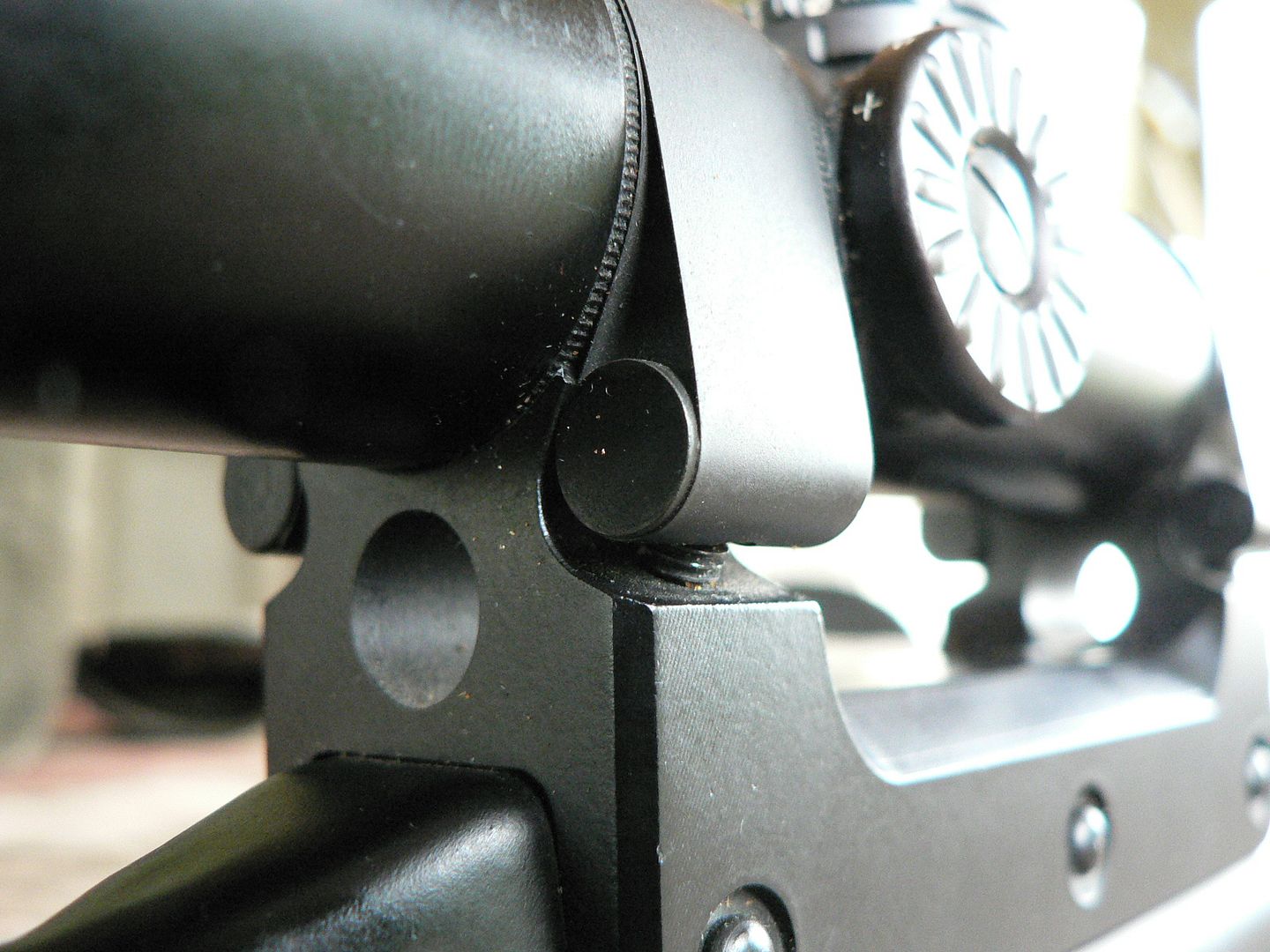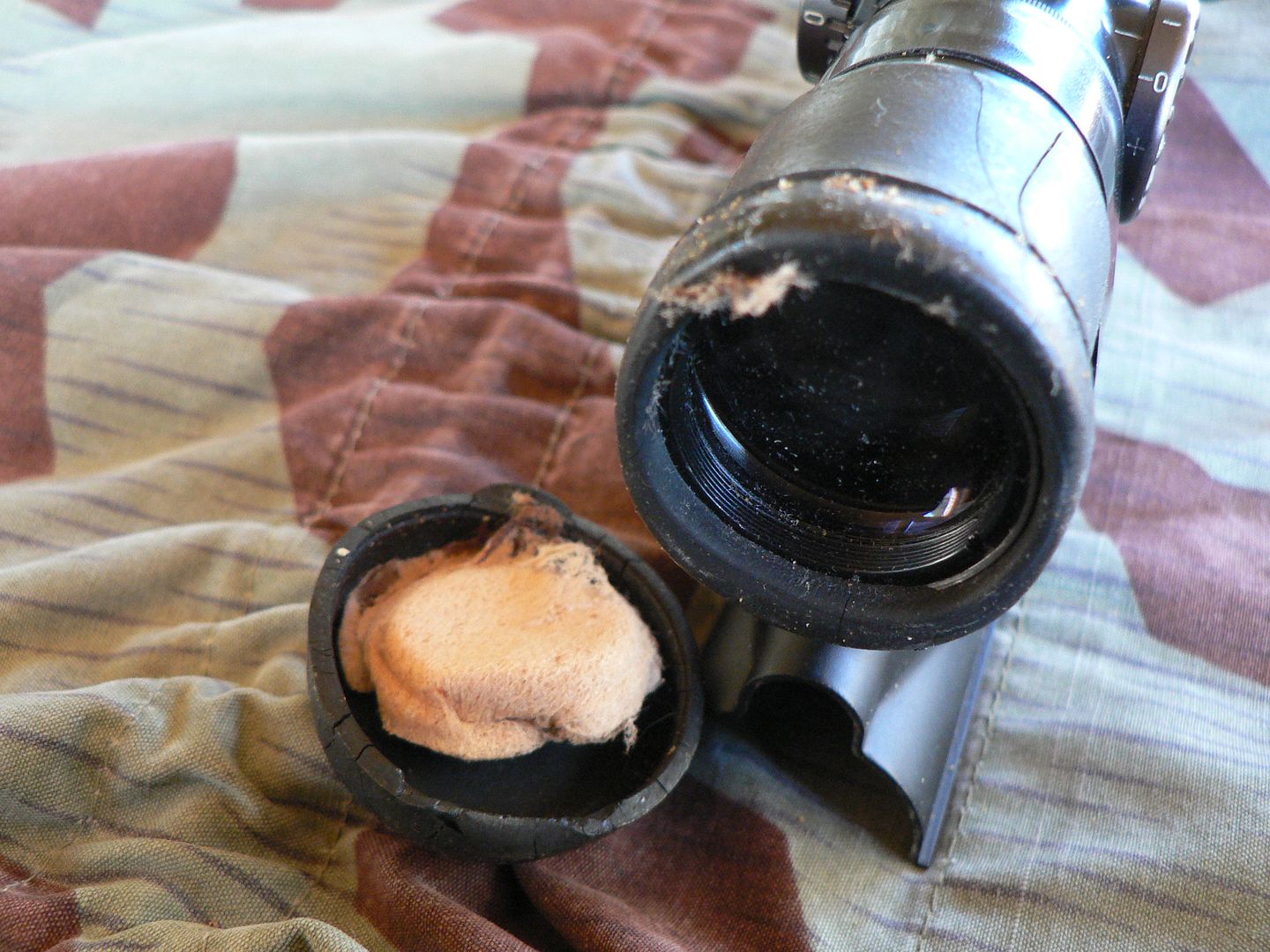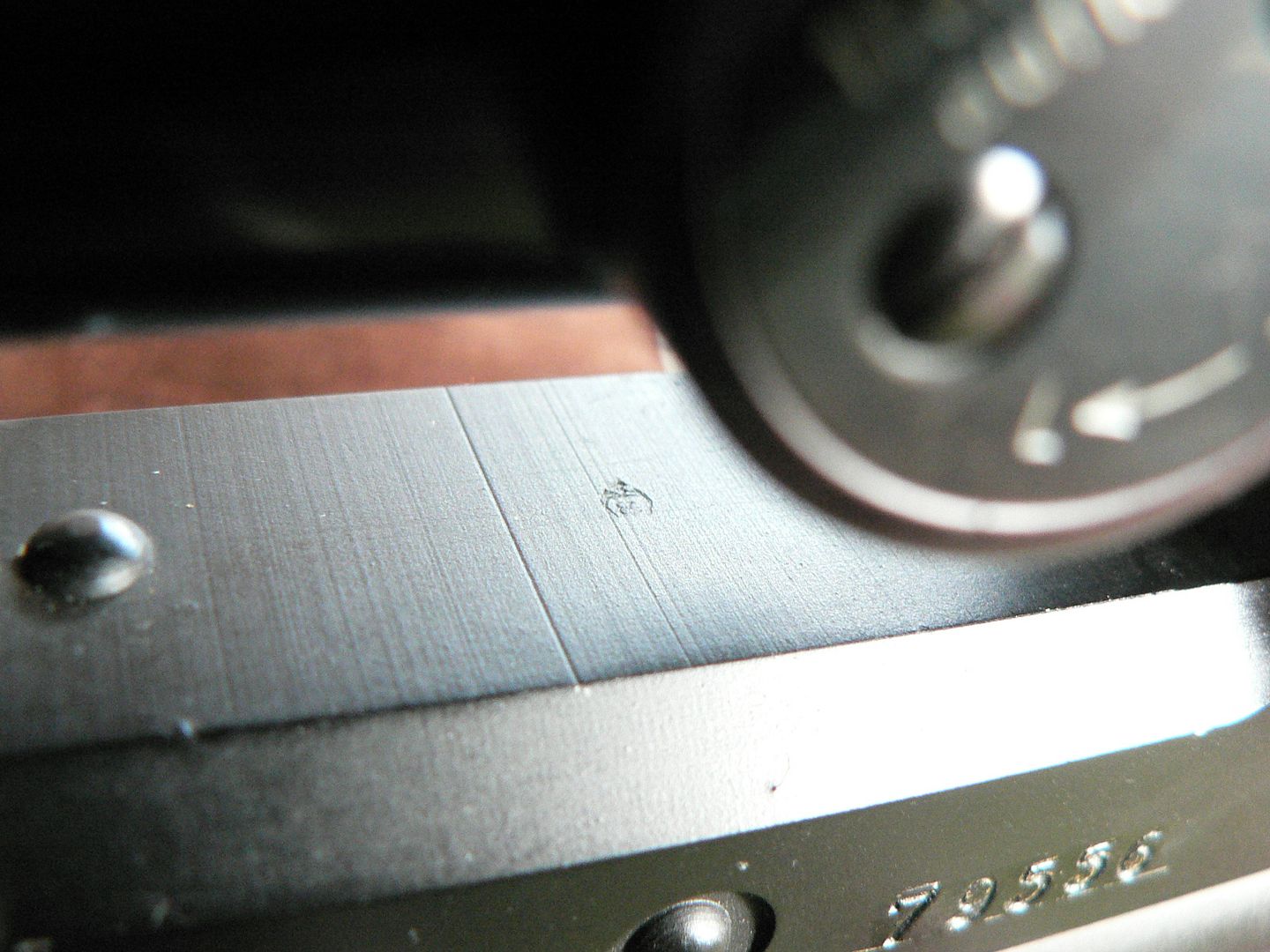All text and images that follow are copyright 2014 and are not to be used without the written permission of the author (me). I recently picked up one of the early band mounted ZF4s made by Hensoldt for the German G1 and I thought I'd do a short essay about this unit since there doesn't seem to be much available on line in the way of detailed photographs. The original case would have been made out of leather since this scope was built and marked for the Bundesgrenzschutz. However, the included case is of canvas covered cardboard which would have been issued with an identical scope only built and marked for the Bundeswehr. As far as I have been able to figure out, these scopes were made from the mid 1950's up until the very early 1960's. At that time the scope was reworked into the "Model 1" (collectors designation NOT the official one) ZF4 for use on the G3. The Model 1 was essentially the same scope internally but with some modifications to the body to make it compatible with the Stanag claw mount developed for the HK G3. The lens covers included are not original to this scope either but came from a Model 1. I do not know what original lens covers looked like but I assume that they were similar. That is only a guess though. This essay will take a few posts and it might take me a few days to fit it all in. So, let's get to work!
First off, we'll look at the case. It is entirely cardboard and covered in a heavy cotton canvas. it is very much like the plastic cases employed for the later models intended for the G3. Here's the front:

On the plastic cases, the keyhole clasp has internal springs to pull the clasp tight on the stud. In this case, the skinny strap between the two rivets appears to be canvas covered rubber. It still works fine after all these years. Strangely, the rivet on the lid, the clasp and the stud are all brass but the clasp rivet is steel.
Here's the back of the case:

The belt loop rivets are brass.
The bottom:

And the top:

I assume that the number is the rifle serial number that it was paired with. The fraying on the left is where the canvas has come untucked from the top and the cardboard has been exposed. The stitching is still intact all the way around so I can only assume that the extra was simply tucked under and glued.
View with lid opened looking down into the case:

the leather triangular tube seen inside is held on by two brass rivets with the lower rivet closing the bottom of the tube thus forming a pouch. It might have held the hex wrench used to tighten the bands or perhaps a cleaning brush for the lenses? On the underside of the lid we see a leather flap. This covers an accessory compartment which we'll look at in a bit. The stitching is seen at the bottom of the picture and another small leather flap is seen at the top of the picture. This covers the steel snap used to hold the larger flap closed and also acts as a pull tab to open the flap for access to the lid accessory compartment.
It's a little hard to see, but look closely at the center of the picture and you will see the "Hensoldt Wetzlar" logo embossed into the leather. In person it's very easy to see:

Here we have the flap opened exposing the accessory compartment:

Inside was a lens cleaning cloth and the yellow filter for use in very bright environments. Whether or not anything else was supposed to be in there I do not know.
Here's a closer look at the yellow filter:

It is glass mounted into either a brass or steel ring painted black. The grooves in the ring engage the lock ring holding the ocular lens block in place.
Here is the filter mounted on the scope:

It fits quite snugly and would be held fast once the rubber end cap/eyecup (or whatever they used) was installed.
Here are the lens caps that it came with:

The sure giveaway that these are not original to this scope is seen in the rectangular notch on each cap. These caps were made for the later Model 1 scope and the notches go around the mounting lug on the HK claw mount.
That's it for the moment as I am out of time. In the next post, we'll get into the interesting stuff. Namely, the mount and scope. I hope you all find this stuff useful and thanks for your time!
First off, we'll look at the case. It is entirely cardboard and covered in a heavy cotton canvas. it is very much like the plastic cases employed for the later models intended for the G3. Here's the front:

On the plastic cases, the keyhole clasp has internal springs to pull the clasp tight on the stud. In this case, the skinny strap between the two rivets appears to be canvas covered rubber. It still works fine after all these years. Strangely, the rivet on the lid, the clasp and the stud are all brass but the clasp rivet is steel.
Here's the back of the case:

The belt loop rivets are brass.
The bottom:

And the top:

I assume that the number is the rifle serial number that it was paired with. The fraying on the left is where the canvas has come untucked from the top and the cardboard has been exposed. The stitching is still intact all the way around so I can only assume that the extra was simply tucked under and glued.
View with lid opened looking down into the case:

the leather triangular tube seen inside is held on by two brass rivets with the lower rivet closing the bottom of the tube thus forming a pouch. It might have held the hex wrench used to tighten the bands or perhaps a cleaning brush for the lenses? On the underside of the lid we see a leather flap. This covers an accessory compartment which we'll look at in a bit. The stitching is seen at the bottom of the picture and another small leather flap is seen at the top of the picture. This covers the steel snap used to hold the larger flap closed and also acts as a pull tab to open the flap for access to the lid accessory compartment.
It's a little hard to see, but look closely at the center of the picture and you will see the "Hensoldt Wetzlar" logo embossed into the leather. In person it's very easy to see:

Here we have the flap opened exposing the accessory compartment:

Inside was a lens cleaning cloth and the yellow filter for use in very bright environments. Whether or not anything else was supposed to be in there I do not know.
Here's a closer look at the yellow filter:

It is glass mounted into either a brass or steel ring painted black. The grooves in the ring engage the lock ring holding the ocular lens block in place.
Here is the filter mounted on the scope:

It fits quite snugly and would be held fast once the rubber end cap/eyecup (or whatever they used) was installed.
Here are the lens caps that it came with:

The sure giveaway that these are not original to this scope is seen in the rectangular notch on each cap. These caps were made for the later Model 1 scope and the notches go around the mounting lug on the HK claw mount.
That's it for the moment as I am out of time. In the next post, we'll get into the interesting stuff. Namely, the mount and scope. I hope you all find this stuff useful and thanks for your time!





































Comment